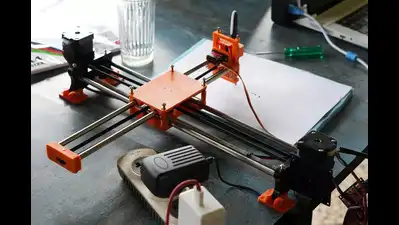ARTICLE AD BOX

Panaji: In the serene village of Moira, two groups of teenagers set out to solve a problem technology has long overlooked—how to make communication and art more inclusive for those with disabilities.
A week later, they emerged with a wearable glove that translates sign language into speech and a bot that converts images into braille.

“Access to visual art remains largely inaccessible for the visually impaired, with few affordable tools to translate images into tactile formats. Our bot addresses this gap by recreating simplified line drawings as tactile impressions, enabling users to interpret artwork through touch and making creative expression more inclusive,” said 15-year-old Vedant Garg.Garg, along with Krish Kapur, Raghav Dalive, and Prabhav Joshi, built a tactile image printer from a modified 2D drawing bot kit. “We chose the braille drawing bot because we wanted to create something meaningful that combined technology with real-world impact. While exploring ideas, we noticed how few innovations tackled accessibility tech for the visually impaired, especially in art. Most tools only converted text to braille and nothing else,” said Dalive, 15.
Simultaneously, another group worked on Un-Mute, a glove that translates sign language into real-time speech.The glove looks ordinary, stitched from synthetic fabric, but inside it carries five flex sensors—one for each finger—an accelerometer, and a gyroscope. “For individuals who are deaf or speech impaired, communication is a daily challenge, especially where sign language isn’t understood. This often leads to isolation and misunderstandings,” said Advit Agrawal, also 15.The prototypes were designed at Maker’s Asylum in Moira. The teens were mentored by Maker’s Asylum founder Vaibhav Chhabra, chief hacker Anool Mahidharia, and asylum director Richa Srivastava. The teens were trained on 3D printers, laser cutters, robotics, coding, and basics of electricals before diving into experimenting and rapid prototyping.“These are teens who are starting from scratch with no exposure to technical skills. The end product is not so important as teaching them the route to get there. In most cases, we found that their projects are motivated by personal reasons,” said Mahidharia.The Un-Mute team—Oorjit Sethi, Advit Agrawal, and Rabani Kohli—are now testing the glove in real-world settings. They plan to add support for both hands, as many sign languages rely on two-handed gestures for complete expression.



.png)
.png)
.png)
















 2 hours ago
4
2 hours ago
4









 English (US) ·
English (US) ·